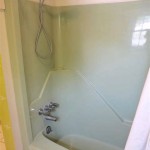Sleeping In Bathtub Depression: Exploring the Hidden Struggle
Depression is a serious mental illness that affects millions of people worldwide. While it can manifest in various ways, some individuals experience an unusual and specific form known as "Sleeping In Bathtub Depression." This lesser-known variant is characterized by an intense desire to sleep in a bathtub, often as a coping mechanism for the overwhelming symptoms of depression.
Individuals with Sleeping In Bathtub Depression may find solace and temporary relief in the enclosed, watery environment of a bathtub. The warm water can provide a sense of security and comfort, helping to alleviate feelings of anxiety and stress. The physical act of submerging oneself in water can also create a sense of weightlessness, offering a brief escape from the emotional heaviness that often accompanies depression.
However, it's important to note that Sleeping In Bathtub Depression is not a harmless behavior. Prolonged exposure to moisture can lead to skin irritation, infection, and other health issues. Additionally, the act of retreating to the bathtub can reinforce feelings of isolation and avoidance, potentially worsening the underlying depression.
If you or someone you know is experiencing Sleeping In Bathtub Depression, it's crucial to seek professional help. A qualified mental health professional can assess the underlying causes of depression and develop a personalized treatment plan. Treatment may include a combination of therapy, medication, and self-help strategies.
In the meantime, there are steps you can take to provide support and understanding to someone struggling with Sleeping In Bathtub Depression:
- Be understanding: Recognize that this behavior is a symptom of a serious illness, not a choice.
- Offer support: Let the person know that you're there for them and that they're not alone.
- Encourage professional help: Gently suggest seeking therapy or counseling to address the underlying depression.
- Create a safe environment: Make sure the bathroom is a safe and comfortable place, with non-slip mats and proper lighting.
- Monitor the situation: If the behavior becomes excessive or interferes with daily life, seek professional advice immediately.
Remember, Sleeping In Bathtub Depression is a treatable condition. With the right support and professional help, individuals can overcome this challenging experience and lead fulfilling lives.

How To Sleep In A Bathtub 9 Steps With Pictures Wikihow

Sleeping In An Empty Bathtub

How To Sleep In A Bathtub 9 Steps With Pictures Wikihow

Taking A Hot Bath Is Better Than Exercise For Easing Depression

Why A Daily Bath Helps Beat Depression And How To Have Good One The Guardian

Science Agrees Baths Are The Key To Great Sleep Better Georgia

Try A Hot Bath Before Bed For Better Sleep

How To Fall Asleep Faster Hot Baths For Sleep

Premium Photo Depressed Young Man Mental Health In Bathtub Bathroom At Home

Battle Symptoms Of Depression With Hot Tubbing Fantasy Spas
Related Posts








